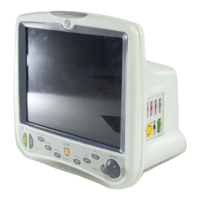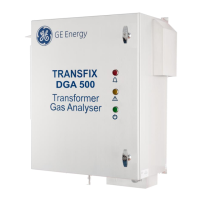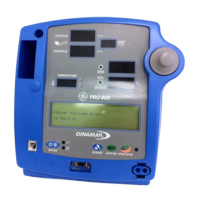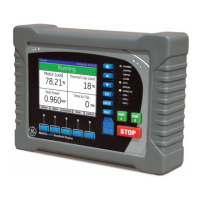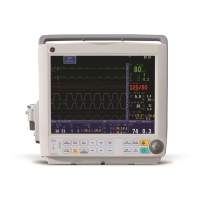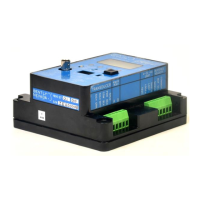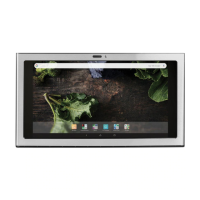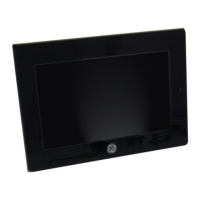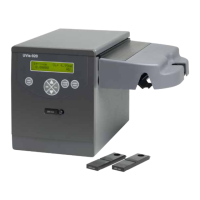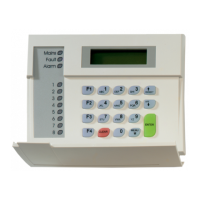Why is my GE Monitor 'POWERING DOWN'?
- EEric RyanAug 6, 2025
If your GE Monitor is 'POWERING DOWN', it indicates that the battery is empty and there is no battery runtime remaining.

Why is my GE Monitor 'POWERING DOWN'?
If your GE Monitor is 'POWERING DOWN', it indicates that the battery is empty and there is no battery runtime remaining.
What does 'CHECK BATT STATUS' mean on my GE Monitor?
The 'CHECK BATT STATUS' message on your GE Monitor indicates that a minor failure has occurred while the battery is either in use or being charged.
What does 'BATTERY ERROR' mean on my GE Monitor?
A 'BATTERY ERROR' message on your GE Monitor signals a serious failure that has occurred while using or charging the battery.
How to avoid data loss due to IP address duplication on a GE Dash 4000 Monitor network?
To prevent data loss caused by internet (IP) address duplication on your GE Monitor network, it's crucial to record all other internet addresses used on your network before changing the factory-assigned internet address.
Why can't my GE Dash 4000 view other monitors on the network?
If your GE Monitor cannot view other monitors on the network, verify that the configured monitor type matches the environment in which the monitor is being used.
What to do if respiration waveform marks are missing or the rate is inaccurate on my GE Monitor?
If the respiration waveform marks are not appearing on the display, or the respiration rate count is inaccurate on your GE Monitor, try adjusting the respiration sensitivity level on the monitor.
| Resolution | 640 x 480 pixels |
|---|---|
| Power Supply | 100-240 VAC, 50/60 Hz |
| ECG | 3/5/12-lead |
| IBP | Up to 4 channels |
| Battery Backup | Yes |
| Certifications | CE, UL, CSA |
| Parameters Monitored | ECG, SpO2, NIBP, IBP, Temperature, Respiration, Cardiac Output |
| Connectivity | Ethernet, USB, Serial |
| Display Type | TFT LCD |
| Recorder | Integrated thermal printer |
| Battery Type | Lithium-ion |
| Operating Temperature | 0 to 40°C |
| Storage Temperature | -20 to 60°C |
| Humidity Range | 15% to 95% non-condensing |
| Display Size | 10.4 inches |
| Cardiac Output | Available |
Details revision history, manual purpose, intended audience, and ordering procedures.
Covers manufacturer responsibilities, general safety practices, and hazard definitions.
Explains various symbols used in the manual and on the equipment for clarity.
Outlines service requirements and method for equipment identification.
Describes the physical components, views, ports, and optional modules of the monitor.
Lists and describes available software packages and optional features.
Explains Ethernet networking, traffic types, and network terminology.
Details the functional principles and internal architecture of the monitor.
Provides a step-by-step guide for initial setup and connection of the monitor.
Outlines procedures for inspecting equipment for damage prior to installation.
Lists pre-installation requirements and considerations for setup.
Details back panel connections for peripherals and network interfaces.
Steps to verify proper installation and functionality after setup.
Prerequisites for configuring a new patient monitor for operation.
Overview of Boot Loader and Service Mode menus for configuration.
Lists configurable settings and directs to detailed procedure pages.
Step-by-step guides for setting unit name, bed number, and monitor type.
Procedures for configuring Defib Sync, Line Frequency, and MUSE protocols.
Instructions for setting time/date and transferring monitor default settings.
Recommends schedule for routine maintenance and safety checks.
Guidelines for carefully inspecting the monitor and its components.
Procedures and precautions for cleaning and disinfecting the monitor surfaces.
Instructions for cleaning, disinfecting, and storing ECG cables and leadwires.
Covers charging, conditioning, storing, and replacing monitor batteries.
General approach, tools, common problems, and solutions for diagnosis.
Lists common error messages and provides steps for resolution.
Explains various battery alarms and messages displayed by the monitor.
Guides users through diagnosing and resolving wireless network connectivity issues.
Information on how to order replacement parts and obtain technical support.
General warnings and precautions for disassembling the patient monitor.
General guidelines for reassembling the monitor after part replacement.
Step-by-step instructions for removing and replacing the handle assembly.
Detailed procedures for removing and replacing the display assembly.
Instructions for replacing key internal components of the monitor.
Post-replacement tests to verify proper functionality and safety.
Explains purpose, frequency, and necessary test equipment for checks.
Lists various functional tests to be performed on the patient monitor.
Procedures for verifying the electrical safety compliance of the device.
General EMC information and manufacturer declarations regarding emissions.
Compliance information for radiated and conducted RF emissions.
Compliance information for immunity to electrical disturbances and ESD.
Guidelines for maintaining safe distances from RF sources to prevent interference.
Lists cables, transducers, and accessories ensuring EMC compliance.
Explains broadcast and unicast traffic types, and network flow concepts.
Discusses compatibility issues between the monitor and wireless network infrastructures.
Lists tested and compatible wireless infrastructures for the monitor.
States the disclosure's intent to meet network specifications and facilitate risk management.
Provides detailed technical specifications for the monitor's network interface.
Details data flow, protocols, and bandwidth requirements for network services.
Identifies risks to safety, effectiveness, or security from IT network failures.
A comprehensive checklist for configuration, conditions, and test equipment.
